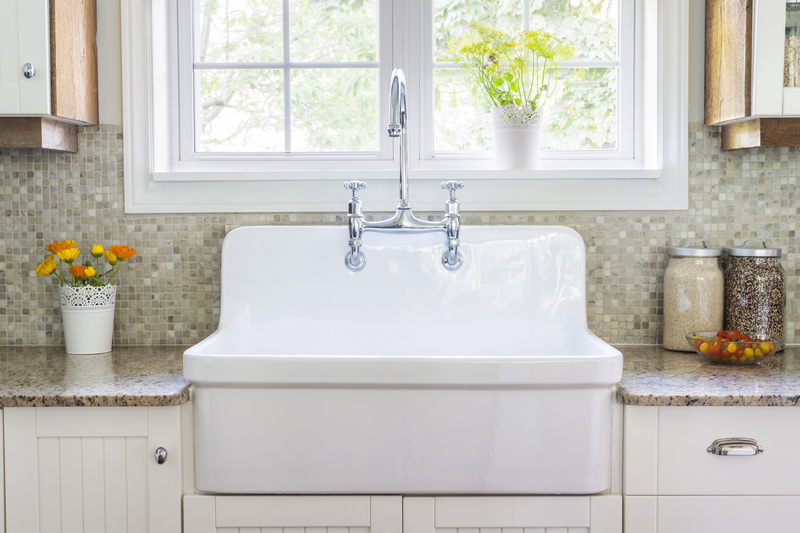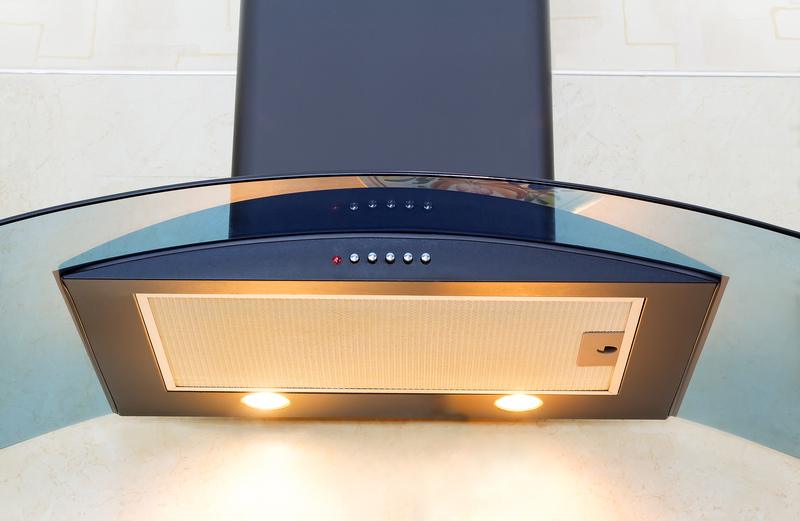Say Goodbye to Mold with These Bathroom Cleaning Tips
Posted on 20/08/2025
Say Goodbye to Mold with These Bathroom Cleaning Tips
Mold in bathrooms is a common issue that millions of homeowners face. Due to high humidity, limited air circulation, and constant moisture, bathrooms are the perfect breeding grounds for mold and mildew. Not only is mold unsightly, but it can also pose potential health risks, such as allergies and respiratory issues. If you're looking to maintain a pristine, healthy bathroom, eradication and prevention of mold growth are key.
In this comprehensive article, you'll discover the best bathroom cleaning strategies to say goodbye to mold once and for all. From understanding what causes mold to learning how to clean it effectively and prevent its return, you'll be armed with all the knowledge and practical steps you need. Let's dive in!
Understanding Bathroom Mold: Causes and Consequences
Before tackling the issue, it's helpful to understand what makes bathrooms prone to mold infestations. Bathrooms often have:
- High moisture from showers and baths
- Poor ventilation and limited air flow
- Warm temperatures
- Organic material (like soap scum, hair, or dust) for mold spores to feed on
When these factors combine, mold spores (which are always present in the air) can quickly colonize surfaces such as tiles, grout, caulking, and even painted walls.
Why Is Mold in the Bathroom a Big Deal?
Mold and mildew not only cause unpleasant odors and unsightly stains, but prolonged exposure to mold can also result in health issues, especially for those with allergies, asthma, or weakened immune systems. Some molds even produce mycotoxins, which are hazardous when inhaled. That's why taking action to eliminate and prevent bathroom mold is essential for a healthy home.

Essential Tips to Prevent Mold Growth in Your Bathroom
Prevention is always easier than remediation! Use these proven strategies to keep your bathroom mold-free:
1. Use a Bathroom Exhaust Fan
One of the most effective ways to reduce moisture is by installing and using an exhaust fan during and after showers. Make sure to:
- Run the fan for at least 20 minutes after a shower or bath.
- Regularly clean the fan's cover to remove dust and debris.
- Consider upgrading to a more powerful model if your bathroom often feels damp.
2. Let in Natural Air and Light
If possible, open windows during and after showering to facilitate air movement. Sunlight helps inhibit mold growth, so leave curtains open when not in use to allow light to penetrate the space.
3. Keep Surfaces Dry
After showers or baths:
- Wipe down walls, mirrors, faucets, and tiles with a microfiber towel.
- Squeegee water off glass doors and tiles to minimize water droplets and residue.
- Hang damp towels and bathmats up to dry outside the bathroom if possible.
4. Fix Leaks Immediately
Dripping faucets, leaking showerheads, or faulty toilet seals can create a constant source of moisture. Inspect plumbing periodically and repair leaks quickly to prevent water accumulation and mold growth.
5. Reduce Bathroom Clutter
Bottles, loofahs, and other items stored in the shower collect water and stay damp, supporting mold. Limit what you store, and regularly clean or replace these items to prevent hidden mold colonies.
6. Use Mold-Preventive Paint and Caulk
When painting or caulking in your bathroom, opt for mold-resistant products. These contain anti-microbial agents that deter mold spores. Be sure to reseal grout and caulking as recommended, since cracks provide entry points for moisture and spores.
How to Remove Mold from the Bathroom
If you already have mold growing in your bathroom, don't worry. With the right approach, you can clean and kill bathroom mold effectively. Follow these step-by-step instructions to tackle even the toughest mold:
Step 1: Gather Cleaning Materials
You'll need:
- Rubber gloves and a mask (to protect against spores)
- Scrub brush or old toothbrush
- Microfiber cloths or sponges
- Mold-cleaning solution (see options below)
- Spray bottle
Step 2: Choose Your Mold Cleaner
Some effective cleaners for mold removal include:
- White vinegar - Spray undiluted vinegar onto the mold, let it sit for 30-60 minutes, then scrub.
- Baking soda paste - Mix baking soda with water, apply, let set, then scrub clean.
- Hydrogen peroxide (3%) - Spray, let it fizz for 10 minutes, scrub, and rinse.
- Commercial bathroom mold removers - Follow the directions on the label carefully.
- Bleach solution** (for tough cases only) - Mix 1 part bleach with 10 parts water. Note: Bleach can discolor surfaces and release fumes. Use only in a well-ventilated area and avoid mixing with ammonia or other cleaners.
Step 3: Apply Cleaner and Scrub
- Spray your chosen cleaner directly onto the moldy area.
- Wait the recommended time for the cleaner to penetrate and kill the spores (usually 10-60 minutes). Don't rush this step.
- Scrub the surface with a stiff-bristled brush or old toothbrush, focusing on grout lines and corners.
- Wipe down the area with a damp microfiber cloth to remove debris and residual cleaner.
Step 4: Dry Thoroughly
Pat the cleaned surfaces dry with a towel or microfiber cloth. Drying is crucial! It helps prevent remaining spores from colonizing again.
Step 5: Repeat if Needed & Monitor
Some patches of bathroom mold may require a second cleaning. If mold returns quickly, this may be a sign of unresolved moisture issues (such as a hidden leak or faulty ventilation) that you should address promptly.
Natural Remedies for Bathroom Mold Removal
For those seeking eco-friendly options, several natural substances can help clean and stop shower mold and mildew:
- Tea tree oil solution: Mix 1 teaspoon tea tree oil with 1 cup of water, spray, and leave it on without rinsing.
- Lemon juice: Natural acidity helps break down mold and freshens air.
- Distilled white vinegar: As mentioned, it's a powerful, non-toxic mold killer.
These natural bathroom mold removers are safe for families and pets and minimize harsh chemical exposure.
Frequently Missed Places Mold Grows in the Bathroom
Mold isn't just found on tiles or in the tub. Don't overlook these often-forgotten spots when cleaning bathroom mold:
- Shower curtains and liners
- Toothbrush holders and soap dishes
- Ceilings and walls, especially above the shower
- Behind toilets and under sinks
- Inside bathroom cabinets, especially under the sink
- Window sills and frames
- Caulking and grout lines
Regular inspections of these areas will help you stay ahead of mold infestations.
Make Mold Prevention Part of Your Routine
Consistency is crucial when it comes to keeping a bathroom mold-free. Here's a simple weekly cleaning checklist to incorporate into your routine:
- Wipe down all regular surfaces, especially after showers
- Clean grout lines and caulking with a tile-safe cleaner
- Wash and dry bathmats, towels, and shower curtains weekly
- Check and clean drains to avoid clogs and standing water
- Inspect for leaks or water spots under sinks and near toilets
- Disinfect frequently touched surfaces, like handles and soap dispensers
Monthly Deep Cleaning Tasks
- Scrub tiles, grout, and caulk to eliminate any hidden mold
- Clean exhaust fans and screens for better ventilation
- Empty and sanitize cabinets and under-sink areas
Quick Answers: Mold Questions from Homeowners
1. How can I get rid of mold in my bathroom naturally?
Natural remedies such as vinegar, baking soda, and tea tree oil are effective in removing bathroom mold without harsh chemicals. Apply, let sit, scrub, and rinse for best results.
2. Can mold in my bathroom make me sick?
Yes, especially for sensitive individuals. Mold exposure can cause allergies, asthma flare-ups, or lung issues. Always ventilate the area and wear protective gear when cleaning visible mold.
3. How do I stop mold from coming back?
- Improve ventilation by using an exhaust fan or opening windows.
- Keep surfaces dry after every shower or bath.
- Seal and repair leaks immediately.
- Maintain a regular cleaning schedule using mold-resistant products.

When to Call in the Professionals
If your bathroom mold problem is extensive (covering more than 10 square feet), or if you suspect mold behind walls and ceilings, it's wise to consult a mold remediation specialist. These professionals will assess, contain, and eliminate the infestation safely and thoroughly.
Conclusion: Enjoy a Mold-Free Bathroom Today
Banishing mold from your bathroom is all about moisture control, regular cleaning, and prompt repairs. By following these bathroom cleaning tips, you not only improve your home's hygiene and freshness but also protect your family's health. Remember, vigilance and prevention are the best tools in the battle against bathroom mold. So arm yourself with these strategies and say goodbye to mold--for good!
For more tips on keeping your home sparkling clean, check out our other articles on bathroom maintenance, eco-friendly cleaning solutions, and mold prevention strategies.





